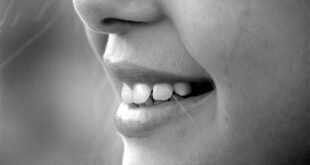According to the Centers for Disease Control and Prevention, Autism Spectrum Disorder can sometimes be detected at 18 months of age or younger. By age 2, a diagnosis by an experienced professional can be considered reliable. Yet, sometimes, signs can become noticeable during the school-going age.
The signs of autism spectrum disorder start showing in many children during the school-going age as many are unable to keep up with stress and the transition. Even if children do not show signs up to this point, hiding autism symptoms becomes harder and harder in an overwhelming environment.
Before you start getting concerned for your child and the possibility of autism, you must know what signs you should look for. Keep on reading to find out more about the signs of autism in older children and teenagers.
1. Unusual Interests
Older children and teenagers with autism can have very particular and repetitive interests. These behaviors can seem compulsive and even baseless to others. For example, collecting sticks or parts of objects that may not have any purpose or value on their own.
Autistic children may also be attached to these objects or hobbies beyond the understanding of others. Your child may have a few objects that they may carry everywhere in their pocket without any intention of letting them go.
2. Repetitive Behaviors
In addition to being attached to unusual objects and having abnormal interests, their repetitive behaviors, such as hand flapping, rocking back and forth, and moving their body unusually, especially when under stress, can be a notable sign of autism in children.
Many autistic children do not just express themselves through their actions. They also pair their repetitive behaviors with unusual noises such as grunts, squeals, or moaning. These actions are usually involuntary and may be induced due to stress or a trigger.
3. Limited Verbal Communication
Anyone who has studied autism understands that communication can be the most challenging thing for children with autism. They do not just have a hard time paying attention to what someone says but also find it challenging to say their piece in a conversation. In some situations, they also may want to be the one on the talking end. Finding a balance can be hard for them.
Another important sign to keep an eye on is if they take everything literally. For example, they may take expressions such as “finding a needle in a haystack” or “once in a blue moon” literally. Making a distinction between normal talk, sarcasm, and humor can be a challenge for them.
In addition, another important sign to look out for is their attention span. A common sign of autism in children is that they are unable to follow instructions more than 2 steps. They might get confused and mix up everything.
4. Difficulty with Non-Verbal Cues
It is not just the words that autistic children struggle with. Another common sign of autism in young children is having difficulty understanding nonverbal cues. These cues may include changes in tone, different body language, or facial expressions.
For example, your child may not note a sarcastic tone or teasing voice when spoken to. It usually also happens because autistic children have a hard time making eye contact with someone they are talking to. It can lead to awkwardness for the one talking.
Autistic children also struggle with showing emotions on their faces. It does not mean that they are empathetic. They just struggle to create the link between their facial expressions and thoughts as every average person. Similarly, they are also unable to read the facial expressions or moods of others.
5. Challenges in Developing Relationships
Most children with autism like to be on their own. They usually get upset with having company because they are mostly unable to make other children play by their rules. This way, they get upset over time and go back to being by themselves.
Autistic children also have difficulty understanding the social rules of friendship. It means that they may not have any social filter and may often struggle with maintaining the trust of their friends. They do not do it intentionally, but it is usually out of their control. Hence, they prefer to remain in a close personal space.
6. Sensory Sensitivity
Children with autism are very sensitive to sensory environments. The most common example is that they only eat foods with a certain texture or may be startled easily by loud noises. They can be very upset about things getting out of their comfort zone and may react unexpectedly.
The most common thing for them to do in such circumstances is to seek sensory stimulation. They may try to find it through jumping, spinning, swinging, crashing, squishing and other movements. Sensory stimulation can differ for every child with autism.
7. Difficulty in School
It is not uncommon for any child to have a difficult time in school while making new friends or managing the pressure. However, it can be the most challenging path for a child with autism. Activities like organizing and prioritizing are standard for school-going children and teenagers. However, children with autism can find it harder as they get more complex.
In addition to struggling with their classes, children with autism also face bullying as they may stand out from the ordinary from other children. It can lead to autistic children feeling more and more confused and overwhelmed in their social settings like schools and playgrounds.
8. Anxiety and Depression
Frequent feelings of being overwhelmed and facing meltdowns can make autistic children anxious. They may struggle with basic things such as meeting new people, going to new places, and so on. As these children grow, they develop a sense of self and understand how others see them.
Older children with autism are well aware that they are different from other children their age. They are often bullied for their differences, leading to eating disorders, mood changes, and depression. Eating disorders are developed as a way for them to control their environment.
 khamush.com Lifestyle | Motivation | Poems
khamush.com Lifestyle | Motivation | Poems



